Water Damage Restoration in Los Angeles, CA
Owning a home or business is one of the hallmarks of living the American Dream. While there are many fulfilling and positive aspects of owning property, one of the challenges that owners face is property damage. This type of damage can be caused by a range of disasters, both man-made and natural. Of all the types of property damage, water damage is among the most common.
Whether from broken pipes or heavy thunderstorms, it doesn't take a professor from California State University, Los Angeles in Los Angeles to know that water damage can be incredibly harmful to your home. Water can spread quickly throughout your property, causing damage to furniture and porous materials as it moves. In the blink of an eye, you could be looking at substantial rotting, warping, and even mold growth. That's why water damage restoration in Los Angeles, CA is so important - to mitigate the damage to your home and help prevent it from happening in the future.
Trying to overcome flooding and other water-related disasters on your own can seem like a lost cause. But with Disaster Response by your side, you don't have to lose hope. As a local water damage clean-up company, we provide comprehensive restoration services to properties of all sizes in Los Angeles. From the first time we assess your water damage to the time we mitigate and restore, we're here for you.

Dealing with property damage can be overwhelming. You're likely concerned about a few key things:

Navigating the insurance claim process
We guide you through every step, ensuring you understand the process and get the most out of your claim.

Scheduling for a quick and quality completion
We provide a clear timeline for restoration, prioritizing both speed and quality, so you can get back to normal as soon as possible.
You might also be thinking about:

Ensuring the safety and health of your family or employees during the restoration: Our team takes all necessary precautions to protect the safety and health of everyone involved, using the latest techniques and equipment.

Understanding the full scope of the damage and what needs to be done:We conduct a thorough assessment of the damage and provide a detailed plan of action, so you know exactly what to expect.

Knowing the costs upfront and avoiding unexpected expenses: We provide transparent pricing and a detailed estimate before any work begins, so there are no surprises along the way.

Preventing future issues, such as mold growth or structural problems: We don't just fix the visible damage—we address the root causes to prevent future issues, giving you peace of mind.

Protecting your belongings and valuables from further damage: We take extra care to safeguard your possessions during the restoration process, minimizing any further impact.



Minimizing disruption to your daily life or business operations: We work efficiently and flexibly to reduce the disruption to your routine, allowing you to continue with your life or business as smoothly as possible.

Finding a trustworthy team to handle your property with care: Our experienced and highly-trained professionals treat your property as if it were their own, ensuring the highest standard of care.

Ensuring the job is done right the first time: We pride ourselves on doing the job right the first time, using industry-leading techniques and thorough quality checks to ensure lasting results.

Receiving clear communication and updates throughout the restoration process: We keep you informed every step of the way, providing regular updates and clear communication, so you're never left in the dark.

Ensuring the safety and health of your family or employees during the restoration: Our team takes all necessary precautions to protect the safety and health of everyone involved, using the latest techniques and equipment.

At Disaster Response, It's All About You
Like Bradbury Building in Los Angeles, Disaster Response has been a pillar of the community for years. As a second-generation disaster response company, we know that our work is never about us. At its most basic, it's always about you—your situation, your needs, and your satisfaction. We engineer our processes to help you quickly recover from water floods and disasters. Our total focus is on you, our valued customer. And that, in a nutshell, is what makes Disaster Response one of the most trusted and highly-rated water restoration companies in Los Angeles.
Instead of focusing on profit, bottom lines, and yearly projections, we make you our priority. That's why we're serious about providing expert-level disaster preparedness and response services when you need them the most. Could you imagine trying to decipher misleading fine print or dealing with a pushy salesperson when you're just trying to get your life back together? That's not the Disaster Response way, and it never will be.
We don't just clean up after water leaks, floods, or other disasters; we go above and beyond by providing a consultative approach that serves you for years to come. We assist you in dealing with insurance adjusters to ensure you get the coverage you deserve without unnecessary delays. We make it a point to meticulously review every detail of your claim and work hard to make sure adjusters understand the full extent of your losses. We can also provide guidance on how and when to engage a public adjuster to bypass inefficiencies in the insurance process. At the end of the day, we strive to provide peace of mind during your difficult time and work tirelessly to get your property back to its pre-loss condition.
The Disaster Response Difference

Professional Technicians, Technology, and Processes
In fact, we'll dispatch a team of water disaster technicians to you within three minutes. We'll also advise you on what can be done to minimize the water damage in your home or business. Our water damage restoration team will use cutting-edge technology and IICRC-approved methods to restore as much of your property as possible.

Insurance Advocacy
Disaster Response works one-on-one with you and your insurance provider to expedite the claims process and get your home back to normal as soon as possible.

Satisfaction Guaranteed
We're proud of our work and stand behind every project we complete. Our goal is to exceed expectations and provide peace of mind throughout every step of your water damage restoration process. If you're not satisfied for any reason, we'll listen to your concerns and work tirelessly to rectify any issues that need addressing.


Your Guide to Water Damage Restoration in Los Angeles, CA
Water damage restoration is a key step in remediating damage to your home, both structurally and aesthetically. Damage from water doesn't just affect the walls, floors, and ceilings in your home. It can also cause deeper issues that, when untreated, can weaken your foundation significantly and lead to long-term instability.
As if that weren't enough, water damage can present health hazards to your friends, family, and pets. Mold and bacteria can grow in damp areas after water incidents, causing allergies, respiratory problems, and even visits to Belmont Village Senior Living Westwood in Los Angeles for examination. Ignoring water damage can also result in irreversible harm to your belongings, including furniture, electronics, and sentimental items, leading to financial loss and emotional distress. Professional water clean-up services can repair the damage to your property, help protect valuable assets, and re-establish your home or business as a safe, healthy environment for occupants.
What Makes Our Water Damage Company in Los Angeles, CA, Different from Others?
One of the most common questions we get at Disaster Response is, "What separates you from other water damage clean-up companies in Los Angeles?" The first and easiest answer to that question centers around our commitment to customer service. We hold our clients in high regard because, without them, there would be no Disaster Response. As such, we work tirelessly to provide them with quality work from friendly and helpful technicians, regardless of the size of their home or business.
But that's just the start. Our clients recommend friends and family to our business because we prioritize the following:

Cost
Investing in damage restoration for your home is a smart move that can help reduce long-term costs. The best part? Our services are covered by insurance companies, so there's less worry about paying out of pocket.

Technicians
Every member of our team has years of experience, specialized training, and certifications in handling water damage. We prioritize our customers' well-being and meticulously attend to every detail to prevent any potential mold-related issues in the future. From single-family homes to
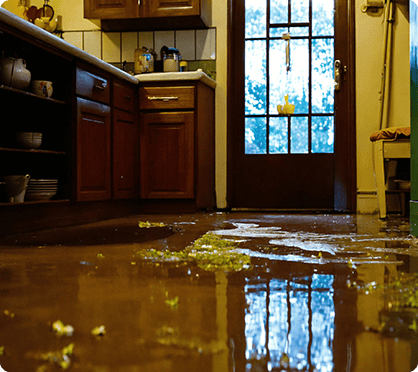
Time
Water disasters happen quicker than you might think. One moment, you're enjoying family time at Griffith Park in Los Angeles. The next, you're pulling in your driveway to a flooded home. When you call our office, we'll get to work assessing the cause of your water damage and how extensive the water damage is in your home or business. From there, we'll dispatch a team of IICRC water damage restoration experts to your location.
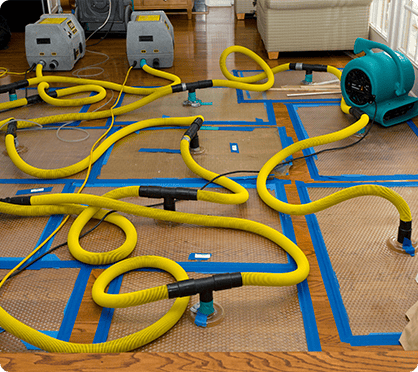
Tools
Disaster Response has made significant investments in cutting-edge water damage equipment, including inspection tools that enable thorough water removal. Our technicians have undergone extensive training to operate these machines and know when and when not to use them.
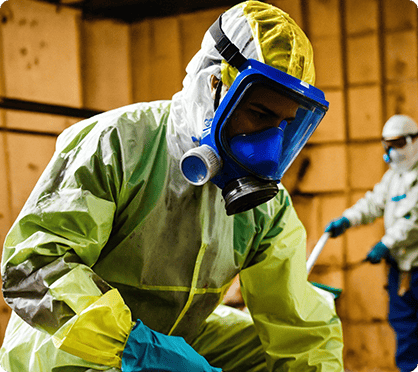
Process
For over 40 years, we have been helping with water damage issues, refining our process along the way. We can quickly find hidden damages that others might miss and document everything for your insurance company.

Reliable Water Damage Restoration Network
We aren't afraid to ask for help if it means a safer, more enjoyable environment for your family or customers. In fact, we have access to a network of industry pros who are experts in a range of water damage services. To make your life a little easier, we also work with insurance professionals who assist with the claims process.
What Does Disaster Response Fix?
As an IICRC-certified water damage contractor in Los Angeles, CA, our technicians can address several areas of your home or business that have been damaged by a water disaster.
- Floors: It's very important to take the necessary time and steps to effectively dry your floors to prevent any potential water damage and mold growth in the future.
- Walls: Depending on the amount of water that enters your business or home, the structural integrity of your property may be at stake. Our technicians will evaluate the situation, inspect your property, and replace materials damaged by water.
- Rugs: If your rugs get wet during flooding or from another water disaster, they may be salvageable. We'll work hard to save all the rugs in your property.
- Furniture: Your furniture is probably expensive and may hold a certain level of sentimental value. Instead of throwing it away or donating it to Hollyhock House in Los Angeles, we can repair and restore it.
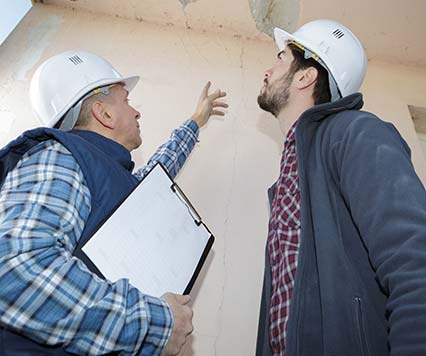
Disaster Response specializes in every kind of damage caused by rain, wind, or snowstorms. We handle water damage, mold, mildew, and more, and can be at your home or office within an hour of your call to assess the situation and put a water damage restoration plan into action.
What Tools Does Disaster Response Use for Water Damage Clean-Up?
We only use the best equipment! With our extensive experience in the Los Angeles restoration industry, we've acquired state-of-the-art tools designed to tackle a wide range of challenges. This experience has also allowed our technicians to identify which type of equipment is best for a particular situation. Some of the most common water damage restoration tools we use include:

Infrared Cameras
Our infrared cameras give us the ability to see moisture in walls and ceilings that is not visible to the naked eye, almost like having "X-ray" vision. This capability allows us to detect and address trapped and hidden humidity, significantly reducing the risk of mold growth.

Moisture Meters
We use moisture meters to measure moisture levels in cellulose material. Before and after the drying process, we will conduct moisture readings in all areas of your property. If we detect moisture in an unaffected area of your building, we'll get to work quickly to dry it.

Air Movers
This equipment is designed to work in conjunction with our dehumidifiers. While our dehumidifiers extract moisture from the air and convert it to a liquid, our Air Mover helps to circulate this moisture in the air so that the dehumidifier can effectively remove it.

Ozone Generators
These advanced tools enable us to cleanse affected surfaces and the air in a more effective manner. Ozone Generators work by causing oxygen molecules to implode, making them a valuable deodorization tool.

Xtreme Xtractor
This tool is great for tackling tough moisture after water damage. It allows us to apply direct pressure to a surface, like a carpet, that has soaked up water. The pressure helps draw out the water, making it easier to remove.
Top 3 Types of Water Damage You Should Know About
Water damage can strike without warning and can wreak havoc on your property, leaving you feeling hopeless and overwhelmed. Whether it's from a burst pipe, a severe storm, or an overflowing appliance, your property needs immediate water damage clean-up in Los Angeles, CA, to prevent further harm. Here are the top three types of water damage you should know about:
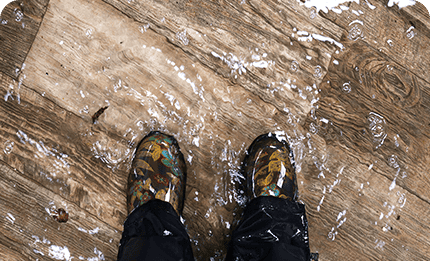
Clean Water Damage

This type of water damage happens from a "clean" source, such as rainwater or a broken pipe in your home. It's easier to clean up than others on this list but can still cause extensive property damage when ignored.
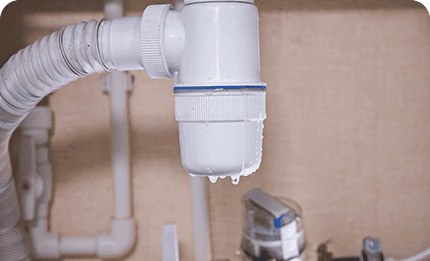
Gray Water Damage

Gray water damage stems from appliances such as toilets without feces, washing machines, and dishwashers. Gray water sometimes contains bacteria and contaminants that can make you or your family sick.
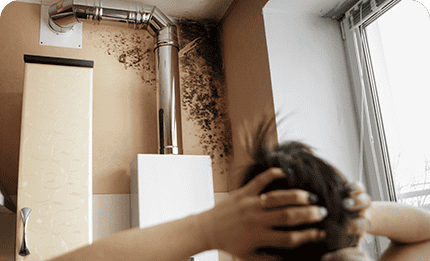
Black Water Damage

The name alone indicates the severity of this type of water damage. It's caused by backed-up sewer lines, river flooding, and standing water that supports bacteria growth. Black water presents serious health hazards and needs to be handled by professional water damage contractors.
If you suspect your home or business has been damaged by one or more of the types of water above, take the following steps:
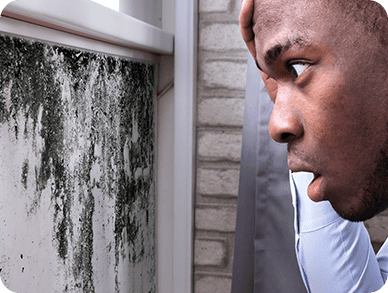
- Be Safe: Turn off all electricity running through your property. Don't go near or touch any water you believe to be contaminated.
- Stop the Source of Water: If you're able, put a stop to the water at its source. That way, you can prevent more damage.
- Call Disaster Response: Contact our water damage company ASAP for water restoration services. Our team is available 24/7 to respond to emergencies.
Our Process for Water Damage Restoration in Los Angeles, CA
Having a water damage restoration company by your side who knows how to remediate moisture is a key factor in getting your life back on track. At Disaster Response, we have refined our process over 40+ years of water damage clean-up experience. That way, we can provide customers with reliable, comprehensive service when they need it the most.
We utilize powerful pumps and vacuums to eliminate standing water from your property. Swift water removal is essential in minimizing damage and lowering the likelihood of mold growth. Our team is dedicated to ensuring efficient water extraction to prevent any additional complications.
After extracting water from your property, we dry and dehumidify the impacted areas. We use industrial-grade dehumidifiers and air movers to do so to eliminate moisture from walls, floors, and furniture. Proper drying helps prevent warping, swelling, and the growth of mold.
Whenever we deal with water damage, we have to address the potential contaminants and bacteria that can enter your home. We make sure to thoroughly clean and sanitize all affected areas to create a safe living environment. This involves cleaning carpets, upholstery, and personal belongings. Our technicians also use antimicrobial treatments to prevent mold and bacterial growth.
The final step in the process is the restoration of your home to its pre-damage condition. This comprehensive restoration process may encompass a range of tasks, from minor repairs such as replacing drywall and installing new carpeting to major reconstruction efforts. Rest assured that Disaster Response is fully equipped to manage all aspects of water damage restoration, from start to finish.
- Maintenance: Have your business or home's roof, appliances, and plumbing inspected by professionals to spot early signs of wear and tear.
- Water Alarms: If there is a flood or leak in your home, a water alarm can alert you so that you can take action immediately.
- Drainage: Your home needs proper drainage systems in place at all times. To prevent water buildup, be sure to unclog your downspouts and gutters.
- Cracks and Gaps: Be sure to seal up any cracks and gaps in your property's foundation to limit water from getting inside.
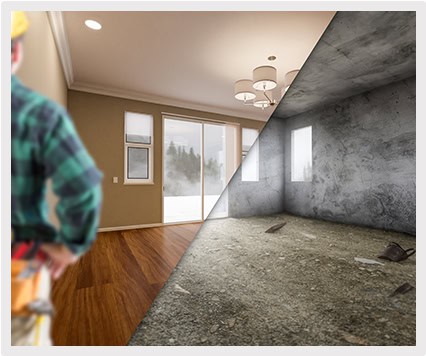
The Water Damage Company in Los Angeles, CA, You Can Trust
When you want a great steak, you don't go to a fast-food joint and expect a filet. You go to a Providence in Los Angeles. When you need quality disaster response services from licensed professionals, you don't go to a fly-by-night shop. You contact Disaster Response.
As a local water damage clean-up business, we believe that providing clients with effective service that they can rely on in times of stress is of utmost importance. While some of our competitors prioritize profits over people, you can rest easy knowing we care about you - and that's something you can always count on when you choose our water damage company.
Whether a pipe has burst in your commercial space and your showroom is flooding, or your home has standing water from a Los Angeles rainstorm, we're here for you 24/7. Contact our office to learn more about the Disaster Response difference or to schedule an inspection for your property today.
Contact Your Emergency Disaster Response Now!
Latest News in Los Angeles, CA
LA's Tourism $30 Minimum Wage Approved By City Council
Los Angeles, CA Patchhttps://patch.com/california/los-angeles/las-tourism-30-minimum-wage-approved-city-council
The Los Angeles City Council approved the gradual increase of the city's tourism minimum wage to $22.50 next year and to $30 by 2028.City News Service, News PartnerLOS ANGELES, CA — The Los Angeles City Council voted 12-3 Wednesday to increase the minimum wage for tourism workers at a more gradual rate and provide improved health care benefits, a move that comes as the region prepares to host several major sporting event...
The Los Angeles City Council approved the gradual increase of the city's tourism minimum wage to $22.50 next year and to $30 by 2028.
City News Service, News Partner
LOS ANGELES, CA — The Los Angeles City Council voted 12-3 Wednesday to increase the minimum wage for tourism workers at a more gradual rate and provide improved health care benefits, a move that comes as the region prepares to host several major sporting events in the coming years.
The City Attorney's Office is expected to update the Living Wage and Hotel Workers Minimum Wage ordinances, which will come back to the City Council at a future date.
Under the proposal, the ordinances would be amended to boost hourly wages to $22.50 an hour by Feb. 1, 2025, increasing to $25 an hour by 2026, $27.50 by 2027, and $30 by 2028. Workers would also receive a health care benefit of $8.35 on a weekly basis, which takes into account the average cost of health care divided by the hours an employee works.
An initial council proposal had called for an increase to $25 per hour starting February 2025, eventually rising to $30 by 2028.
"No one should work a full-time job in the city of LA and not be able to afford a place to live," Council President Marqueece Harris-Dawson said in a statement.
Find out what's happening in Los Angeleswith free, real-time updates from Patch.
The vote came after more than three hours of discussion from the council and the public. Council members Traci Park, Monica Rodriguez and John Lee voted no, citing concerns over the city's struggling tourism industry and an economic study that they say failed to capture the realities of hoteliers.
The Living Wage Ordinance applies to city contractors and ensures that employees are paid a set living wage, setting a cash wage rate and health- related benefits. The Hotel Workers Minimum Wage ordinance requires hotel employers with 60 or more guest rooms to pay their employees the specified minimum wage and provide 96 compensated hours of off time, and at least 80 additional hours of uncompensated time off per year.
Currently, airport and hotel workers earn $18.78 per hour and $19.73 per hour, respectively. Airport workers also earn a health care payment of $5.95 per hour, while hotel workers do not. The plan would allow exemptions for concessionaires with 50 or fewer employees at LAX, as well as some hotel owners under specific conditions.
Park, Rodriguez and Lee introduced several amendments to the proposal, which all failed in separate 10-5 votes. They sought an alternate schedule for such pay increases and a different health benefit plan, among other things, which they argued represented more of a compromise with the hotel industry.
They said the wage hikes would ultimately harm the hotel and tourism industry, which has yet to recover to 2019 pre-pandemic levels.
Meanwhile, a representative for Berkeley Economic Advising and Research highlighted their economic study, commissioned by the City Council, which found that implementing such a policy would create 6,300 jobs in the city, generate $1.2 billion across the L.A. region, and bring in more than $100 million more pay within four years for tourism workers.
Wage increases are expected to impact 23,000 workers, or about 40% of airport employees and 60% of hotel workers.
While some council members criticized the report for failing to capture the impacts to hotel owners, L.A. Chief Legislative Analyst Sharon Tso reiterated that hotel owners did not participate nor provide requested information for BEAR to conduct a more granular analysis.
"Tourism is a critical pillar of our local economy, sustained by the dedication of employees who create unforgettable experiences for millions of visitors each year," Councilman Curren Price said in a statement. "Yet, for too long, the hardworking airport and hotel workers ... have been left behind, forced to make ends meet on wages that fail to meet basic needs."
The motion was originally introduced in 2023 by council members Price, Katy Yaroslavsky, Hugo Soto-Martínez, Tim McOsker, Heather Hutt and Harris- Dawson.
Hotel owners and business leaders opposed the proposal. Many of them argued such a policy would have negative impacts on the hotel industry and exacerbate challenges with the city's tourism sector.
Chad Maender, president and CEO of the LAX Coastal Chamber of Commerce, representing close to 700 businesses around the airport, warned the council that approving the proposal would increase wages by 55% overnight for hotel and LAX-related businesses.
"That's not thoughtful. Tourism, aviation and hospitality have not fully recovered to pre-pandemic levels," Maender said. "This ordinance will have a crippling effect beyond just the hotels and LAX."
Mark Davis, president and CEO of the Hilton Universal, said the proposal would "likely kill" the Hilton Universal expansion project to build 400 more rooms.
In a letter to Harris-Dawson, hotel owners listed other potential consequences of the increase. The Pebblebrook Hotel Trust, which operates nine hotels in L.A., West Hollywood and Santa Monica, anticipates closing hotel restaurants and scaling back operations and converting hotel rooms to residential units.
The operator of Embassy Suites LAX, Embassy Suites Los Angeles Downey and the Pierside Hotel Santa Monica would be unable to continue to provide anything other than entry level roles and wages, officials said.
In anticipation of potential consequences to the hotel industry, council members requested a number of provisions to monitor negative impacts to hotel construction, among other reports.
The Hotel Association of Los Angeles has also warned that increasing wages for workers could impact contracts with LA28 and signatory hotels that were negotiated in 2020.
"These increases constitute an approximately 70% increase in wage and health benefits costs to hotels in 2025. By the time of the 2028 Olympics, the increase will be close to 100%," according to a letter sent by the hotel group to LA28. "To put it plainly, this staggering increase in costs makes it infeasible for most if not all signatory hotels to participate in LA28's hotel room block," the letter added.
However, Tso noted that the LA28 organizing committee declined to weigh in on the matter, not wanting to influence a legislative policy. She mentioned that some of the contracts are still being finalized, and ultimately hotel owners will decide whether to maintain or back out of those agreements.
Following the vote, tourism workers celebrated the council's action. Some of the workers who participated in a three-day fast in "hopes of inspiring" city leaders to stand with them also broke their fast.
"We deserve to be paid a wage we can live on," Jovan Houston, an LAX customer service agent and SEIU-USWW executive board member, said in a statement. "We deserve access to quality health care, so I can treat the COPD I developed from working at and living near LAX. I deserve access to the care my son needs to treat his asthma."
Jessica Durrum, director of Los Angeles Alliance for a New Economy, which has advocated on behalf of tourism workers and lobbied for the wage increase, said hotels and airlines are thriving at a time when their workers are facing evictions or struggling to feed their families.
"Today, they are one step closer to justice," Durrum, who also led LAANE's Tourism Workers Rising campaign, said in a statement. "We have stood with workers in every fight to raise the wage, since the landmark 1997 Living Wage Ordinance, and today's vote is continuing that noble legacy."
By JOSE HERRERA, City News Service
Are you at risk of tsunami flooding in California? Check these maps
Grace Tooheyhttps://www.latimes.com/california/story/2024-12-11/are-you-at-risk-of-tsunami-flooding-in-california-check-these-maps
California’s coastal areas are obviously at highest risk from an incoming tsunami. But how far inland does the threat extend?The answer might surprise you. Tsunami hazard areas can be quite large depending on the location, and in some cases, they are home to large numbers of people.A large swath of Venice and all of Marina del Rey are in a tsunami hazard area. So are wide sections of Long Beach, including Belmont Shore, Naples Island and the city Convention Center.AdvertisementSignificant segments of Orange ...
California’s coastal areas are obviously at highest risk from an incoming tsunami. But how far inland does the threat extend?
The answer might surprise you. Tsunami hazard areas can be quite large depending on the location, and in some cases, they are home to large numbers of people.
A large swath of Venice and all of Marina del Rey are in a tsunami hazard area. So are wide sections of Long Beach, including Belmont Shore, Naples Island and the city Convention Center.
Advertisement
Significant segments of Orange County are also at risk. They include Newport Beach’s Balboa Island and Balboa Peninsula, as well as neighborhoods in Sunset Beach and Seal Beach.
Dec. 6, 2024
Even where tsunami hazard zones are relatively narrow, many Californians may not have the instinct to get to higher ground after the ground shakes.
The Malibu Village mall is separated from the coast by two rows of houses, a golf course and Pacific Coast Highway, yet is still at risk because of its proximity to not just the ocean but also Malibu Lagoon.
Advertisement
And the risk can vary. The tsunami hazard area in Manhattan Beach is essentially limited to the beach and pier on the coastal side of the Strand, the walking-and-biking path that separates the sand from luxury homes. Yet in Hermosa Beach, the tsunami hazard area also covers the pricey homes a block or so east of the trail.
Visiting SeaWorld in San Diego? The theme park is outside the hazard zone, but some hotels and resorts to the west and north are not. Checking out San Francisco’s Ferry Building? There’s no need to flee the city — walking a few blocks inland could be all you need to do to get to safety.
And not all tsunamis will flood the entire hazard zone. If a tsunami is, say, more than four hours away from arriving, officials may be able to issue fine-tuned orders that will limit the scope of the evacuated area. But if a tsunami is coming in a shorter period of time, authorities may decide to simply evacuate the entire zone as a precaution.
Advertisement
Tsunami hazard zones represent the maximum inundation area in a number of extreme yet realistic scenarios, the California Geological Survey says.
If you’re uphill or inland from the zones, you should be safe from any tsunami. That’s why officials say it’s important to know whether you live, work or play in a hazard zone. Experts recommend knowing how you will evacuate and where you need to go.
But if you don’t have prior knowledge of whether you’re in a tsunami hazard zone, and no maps or evacuation signs are available, aim for spots 100 feet above sea level and as far as two miles inland, if possible, officials say.
Given geography, density and access, some areas could be particularly challenging to evacuate in the event of an earthquake-spawned tsunami.
“There are places on the U.S. West Coast, and here in Alaska, where an entire safe evacuation for a near-shore event ... would [have] a much lower success rate,” said Dave Snider, the tsunami warning coordinator at the National Tsunami Warning Center in Alaska. “That is the No. 1 reason why people need to understand what their hazard zone is ahead of time.”
An example of a hard-to-evacuate area could be the ports of Los Angeles and Long Beach. But in Laguna Beach, advance knowledge of the tsunami hazard area shows that it’s relatively small, and walking a few blocks away could make a difference.
While rare, a tsunami could arrive just minutes after the earth shakes, depending on the location. Snider said the tsunami warning from last week — issued in the wake of a magnitude 7.0 quake that struck 30 miles off the coast of Humboldt County — is a good reminder that this type of event is a real concern.
“You just experienced a significant alert — one that may never happen again to you,” Snider said. “But in the event that it does … ask yourselves, did I have alerts when I needed them?”
Those who were ordered to leave during last week’s widespread warning should use the experience to assess whether their evacuation plan worked and if they need to change it, Snider said. Those who live in higher-risk areas should also, ideally, have a go-bag ready, he added.
Here are maps showing some of Southern and Central California’s most populated areas within a tsunami hazard zone, as determined by the California Geological Survey. The yellow section indicates the tsunami hazard area.
WWE Announces More Details On NXT New Year’s Evil On Jan. 7 In Los Angeles, CA.
Matt Boonehttps://wrestlingheadlines.com/wwe-announces-more-details-on-nxt-new-years-evil-on-jan-7-in-los-angeles-ca/
WWE issued a press release on Wednesday morning regarding the first WWE NXT special event for 2025.Featured below is the official announcement regarding NXT New Year’s Evil on January 7 in Los Angeles, California:NXT KICKS OFF 2025 WITH NEW YEAR’S EVIL LIVE FROM LOS ANGELES ON TUESDAY, JANUARY 7 Tickets On Sale Wednesday, December 18 at 10am PT/1pm ET Exclusive Presale Access Begins Tuesday, December 17 at 10am PT/1pm ET December 11, 2024 &ndas...
WWE issued a press release on Wednesday morning regarding the first WWE NXT special event for 2025.
Featured below is the official announcement regarding NXT New Year’s Evil on January 7 in Los Angeles, California:
NXT KICKS OFF 2025 WITH NEW YEAR’S EVIL LIVE FROM LOS ANGELES ON TUESDAY, JANUARY 7
Tickets On Sale Wednesday, December 18 at 10am PT/1pm ET
Exclusive Presale Access Begins Tuesday, December 17 at 10am PT/1pm ET
December 11, 2024 – WWE®, part of TKO Group Holdings (NYSE: TKO), today announced that New Year’s Evil will take place at The Shrine Expo Hall in Los Angeles on Tuesday, January 7. The special episode will kick off the new year of NXT programming live on The CW starting at 8 p.m. ET.
Tickets for New Year’s Evil will go on sale Wednesday, December 18 at 10am PT/1pm ET via www.shineauditoriumcom or www.axs.com. The official presale will begin Tuesday, December 17 at 10am PT/1pm ET. Fans can register now to receive an exclusive presale offer by visiting https://www.wwe.com/nye-2025-presale-registration.
In November 2023, WWE and The CW announced a five-year agreement to bring NXT to broadcast television for the first time in its 13-year history. NXT joins a growing roster of live sports on The CW including ACC football and basketball games Pac-12 football and LIV Golf. The CW is also home to the Emmy®-award winning weekly studio series “Inside the NFL” and the NASCAR Xfinity Series. The network will soon offer more than 500 hours of sports programming year-round.
About WWEWWE® is an integrated media organization and the recognized global leader in sports entertainment. The company consists of a portfolio of businesses that create and deliver original content 52 weeks a year to a global audience. WWE is committed to family-friendly entertainment on its television programming, premium live events, digital media, and publishing platforms. WWE’s TV-PG programming can be seen in more than 1 billion households worldwide in 25 languages through world-class distribution partners including NBCUniversal, The CW, TNT Sports, Sony India and Rogers. The award-winning WWE Network includes all premium live events, scheduled programming and a massive video-on-demand library and is currently available in approximately 165 countries. In the United States, NBCUniversal’s streaming service, Peacock, is the exclusive home to WWE Network. WWE is part of TKO Group Holdings (NYSE: TKO). Additional information on WWE can be found at wwe.com and corporate.wwe.com.
About The CW NetworkThe CW is America’s fifth major broadcast network and reaches 100% of US television households. The CW delivers 15 hours of primetime entertainment programming per week in addition to over 300 hours of sports per year as the broadcast home to LIV Golf, ACC football and basketball games, Pac-12 football games, “Inside the NFL,” WWE NXT and NASCAR Xfinity Series. The fully ad-supported CW App, with more than 100 million downloads to date, is available for free to consumers on all major platforms and is home to the latest episodes and seasons of The CW’s primetime programming, live streaming of LIV Golf tournaments and a library of entertaining film and television content for on-demand viewing. The CW is 75%-owned by Nexstar Media Group, Inc. (NASDAQ: NXST), a leading diversified media company and largest CW affiliate group. For more information about The CW, please visit www.cwtv.com.
Column: Even a 2-year-old knows the challenge facing De La Salle against unbeaten Mater Dei
Eric Sondheimerhttps://www.latimes.com/sports/highschool/story/2024-12-11/big-challenge-facing-de-la-salle-against-unbeaten-mater-dei
Somebody kept calling.“Hello,” I’d answer.Nobody would respond. There was only the sound of talking in the background.It happened five times.The mystery was solved when Concord De La Salle football coach Justin Alumbaugh reached me and apologized that his 2-year-old daughter, Isabel, had gotten ahold of his phone.If you think De La Salle’s task of trying to hand Mater Dei its first defeat in Saturday night’s CIF Open Division state championship bowl game might be tough, imagine...
Somebody kept calling.
“Hello,” I’d answer.
Nobody would respond. There was only the sound of talking in the background.
It happened five times.
The mystery was solved when Concord De La Salle football coach Justin Alumbaugh reached me and apologized that his 2-year-old daughter, Isabel, had gotten ahold of his phone.
If you think De La Salle’s task of trying to hand Mater Dei its first defeat in Saturday night’s CIF Open Division state championship bowl game might be tough, imagine the balancing act Alumbaugh has been pulling off with help from his wife, coaching football and having kids ages 6, 5 and 2.
Advertisement
“There’s no denying how good they are,” Alumbaugh said of the 12-0 Monarchs.
Coming to Saddleback College by bus for the 8 p.m. kickoff, De La Salle (12-0) is such a huge underdog that the CalPreps.com computer prediction has it Mater Dei 44, De La Salle 3.
This game has such a certain outcome — a Mater Dei victory — that it reminds me of the first Division I state bowl game in 2006. De La Salle was the heavy favorite against Canyon Country Canyon. De La Salle was unbeaten and ranked No. 1 in the nation. When the game ended, Canyon had won 27-13. A De La Salle victory Saturday would be the biggest upset since then.
Former Canyon coach Harry Welch has some advice for the underdog.
“I was more focused on us than De La Salle,” Welch said. “In fact, I took the team and coaches early off the field before the game and read them the riot act because I didn’t care for our focus. I said nothing during the week before the game to motivate or help focus on De La Salle.”
Advertisement
De La Salle hasn’t played since a 10-7 victory over Pittsburg in a rainstorm on Nov. 22. That’s three weeks of preparation. The Spartans have a lineman committed to Oregon, a quarterback who is 100-meter dash fast and a running back who’s the son of former NFL running back Maurice Jones-Drew.
Mater Dei coach Raul Lara knows all about De La Salle’s pedigree from having played the Spartans when he was coach of Long Beach Poly in 2001. His team lost to De La Salle 29-15 when Jones-Drew was the star running back.
This game be a mismatch as expected. Or maybe there’s a surprise coming. In sports, anything can happen.
Advertisement
De La Salle is holding nothing back, including bringing legendary former coach Bob Ladouceur to stand on the sideline. Perhaps De La Salle will play some of those memorable sports movies featuring upsets. “Remembering the Titans” is one. “Hoosiers” is another.
Alumbaugh just needs to make sure his phone is in his pocket or somebody might be receiving lots of calls from a 2-year-old during the game.
Pitcher who tackles well
In the 11:30 a.m. Division 2-A final at Saddleback College on Saturday, watch out for Palos Verdes’ 245-pound defensive tackle, Giuseppe Virzi, against 14-0 Lincoln Twelve Bridges.
He had a 1.87 earned-run average pitching for the baseball team last spring and decided to return to football at the last minute after a summer of baseball. He increased his weight, joined late and has become a big part of a big-play defense that has been key to helping Palos Verdes (10-5) reach its first state championship game in football.
Another defensive lineman who was a late addition was Marlon Osborne, who skipped his junior season, came out late and has joined with Virzi to provide help.
Asked how his team has gotten this far after losing 25 players to graduation, Palos Verdes coach Guy Gardner said, “I’m not sure. We’re still trying to figure it out.”
Highland’s Wyatt connection
Palmdale Highland coach Justin Wyatt gets one final game with his son, Justin Jr., the 6-foot-4 quarterback headed to Nevada. Highland plays Petaluma St. Vincent de Paul in the 4-AA final at 4 p.m. Friday at Veterans Stadium in Long Beach.
“It will be a special moment,” Justin Sr. said.
He has three other football-playing sons. Charlie Jackson III is a freshman receiver. Jalen Wyatt is an eighth-grade quarterback. Isaac Jackson is a seventh-grade edge rusher.
“The next three or four years are going to be fun,” Justin Sr. said.
Through a window, Pepperdine students watch Malibu fire engulf campus
Jenny Jarviehttps://www.latimes.com/world-nation/story/2024-12-10/through-a-window-pepperdine-students-watch-malibu-fire-engulf-campus
By Jenny JarvieNational CorrespondentThe students huddling in Pepperdine University’s library watched through the windows as flames crested the Santa Monica Mountains.Some students prayed. Others called their parents as the wind blew embers across campus, setting palm trees on fire and drawing orange flames closer and closer to their building.A few wondered out loud, when they were told to...
By Jenny JarvieNational Correspondent
The students huddling in Pepperdine University’s library watched through the windows as flames crested the Santa Monica Mountains.
Some students prayed. Others called their parents as the wind blew embers across campus, setting palm trees on fire and drawing orange flames closer and closer to their building.
A few wondered out loud, when they were told to stay away from the windows, whether they had made a fateful mistake in not leaving campus.
“It was terrifying,” said Matthew Morrison, an 18-year-old acting major, who watched the blaze from the library’s first floor. “The fire was so intense, it felt like it was battering the windows.”
Advertisement
As the Franklin fire raged across Malibu in the early hours on Tuesday morning, officials at Pepperdine University urged students and faculty to remain on campus, inside the university’s fire-resistant buildings, even though they were in the middle of Malibu’s fire evacuation zone.
Dec. 10, 2024
University officials were following a well-established plan: Pepperdine’s policy of sheltering students in fire-resistant structures when wildfires threaten Malibu has been in effect since 1993. The university notes that its shelter-in-place policy is supported and reviewed annually by the Los Angeles County Fire Department. In an emergency FAQ, the university notes that no campus buildings have been lost to wildfires.
On Monday night, many students on the Christian campus nestled between the foothills of the Santa Monica Mountains and the Pacific Ocean were prepping for finals when power went out after 11p.m. Campus officials sent out alerts urging them to leave their dorms and head to the university’s fire-resistant buildings.
Advertisement
“All community members on the Malibu campus are directed to shelter in place in the Tyler Campus Center or Payson Library,” Pepperdine shared on X at 1:09 a.m. Tuesday.
Morrison was sleeping after a long day cramming for finals when his suitemates woke him. “Hey, we gotta go!” they yelled. “Pack a to-go bag!”
He tossed his wallet, laptop, water and granola bars into a duffel. Outside his dorm, the air was thick with smoke as he made his way to the library. But Morrison wasn’t scared. The fire was still off campus. Mostly, he felt irked to be missing sleep the night before three important exams.
Advertisement
Some students left campus. But Morrison said he felt it was more dangerous to leave and potentially end up being trapped on a narrow roadway.
“The people that left 11 p.m. or midnight, I understand they wanted to get out,” Morrison said. “But anytime past that, the fire was so close that it was not worth even risking leaving and getting caught up in traffic on the Pacific Coast Highway with fire all around you.”
Pepperdine staff handed out masks to students to protect themselves from the smoke. Firetrucks descended on the campus to fight the flames. And as the fire approached, some of those looking out the windows of the library became agitated.
Video posted on Pepperdine Graphic Media showed students pacing inside a campus building as they watched flames lash the trees outside. Some students on the campus questioned the university policy.
“Don’t leave,” a voice pleads in the video as students, clearly agitated, debate their options.
“Just seeing the flames grow and seeing that bright red color of fire just get brighter and brighter and brighter, it was so scary,” Gabrielle Salgado, a senior and journalism major, told KABC-TV.
“A lot of people were asking: ‘Why are we here?’” said Henry Adams, a student and journalist at Pepperdine Graphic, who followed the news from off campus. Some students, Adams said, may not have understood why Pepperdine had developed a shelter-in-place policy.
“Maybe that could be communicated more effectively,” Adams said, “so students … understand that there is a reason why this is the protocol.”
Dec. 10, 2024
Pepperdine developed its stay-in-place policy after the 1985 Piuma fire caused students to flee their dorms. Officials figured it was safer to build fire-resistant buildings than evacuate thousands of people quickly on Malibu’s narrow roads. Buildings on the 830-acre campus are now constructed with fire-resistant materials whenever possible, and brush is cleared at least 200 feet away from buildings.
Over the last 30 years, Pepperdine students have sheltered in place as a succession of fires have broken out, from Old Topanga in 1993 to Woolsey in 2018. During the latter inferno, which destroyed 1,600 structures from Westlake Village to Malibu, the school’s policy was questioned and criticized. Some students expressed anxiety about remaining on campus. Meanwhile, some community members complained the university’s shelter-in place-policy caused firefighting resources to be diverted from other parts of Malibu.
By around 3:30 a.m. Tuesday, the school said, the worst of the Franklin fire had pushed past the Malibu campus. Smaller spot fires continued to burn, the university noted, but none were threatening buildings or lives.
At around 7:30 a.m., officials lifted the shelter-in-place protocol and encouraged students to return to their residence halls. With spot fires continuing to flare up, officials urged students and staff to remain on campus.
Classes were canceled Tuesday, and final exams were postponed. University officials said in a news release they were actively monitoring conditions on and around campus, but there had been little damage to campus structures and no reports of injuries among students, faculty or staff.
“The safety and security of our students, faculty, and staff remain our highest priorities, and we will do everything in our power to continue to support them in the days ahead,” said Pepperdine President Jim Gash in statement. “As we emerge from this challenge, we will remain rooted in faith, leaning on one another, and serving our Malibu community together with God’s help.”
Late Tuesday afternoon, as power remained out, the university reinstated its shelter-in-place protocol, announcing on X that it was requiring students on campus to hunker in the library or campus center at 4:30 p.m. for the duration of the night.
After walking across campus Tuesday, Morrison said the usually lush green campus was burned black and brown, with lots of downed palm trees. Most students were shell-shocked and worried about when they would take their finals.
Morrison said he was supposed to take three exams Tuesday — religion, acting and scenic design — and he could not take them Wednesday as he was scheduled to fly home to Texas for the holidays.
“I think I’m still in shock right now,” Morrison said after a morning nap.
“When I got in my bed and tried to sleep, it all immediately hit me,” he said. “Last night was one of those moments, I didn’t know if I would see my family again.”
Disclaimer:

 Call us 877-451-9251
Call us 877-451-9251